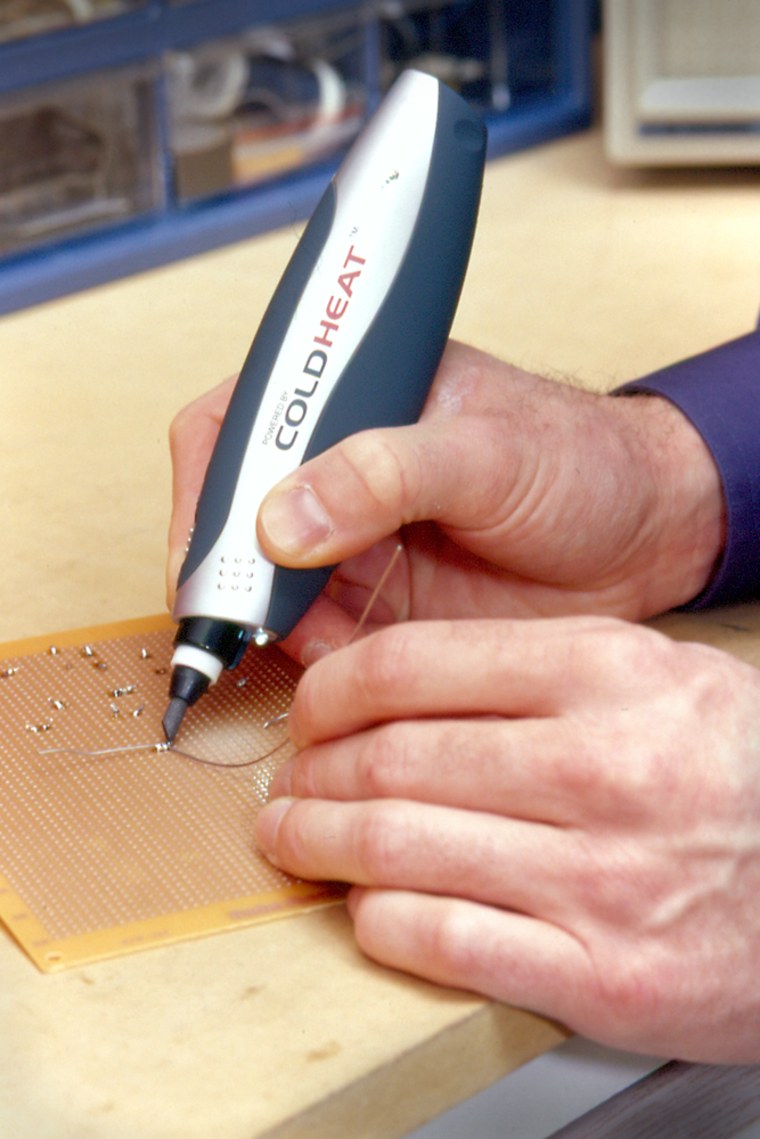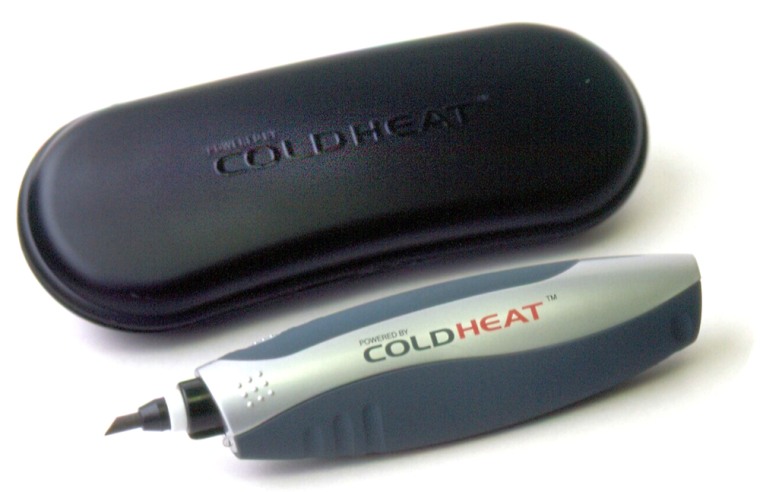Every true tech geek worth his or her weight in solder and flux has been foaming at the mouth over a new infomercial on TV. It’s for a device called Cold Heat: a soldering iron that reportedly stays cool to the touch –- until it touches the metal you want to want to join with hot solder. When you’re finished, it cools down in seconds. The promise of fewer soldering iron burns? I had to try one immediately.
Cold Heat technology was created by attorney/inventor Grigore Axinte who immigrated to the United States from Romania in 1991. He set out to build a perfect point-to-point heating device which channeled energy only where and when it was needed.
The Cold Heat Soldering Tool is cordless and battery powered (it takes 4 AAs). A new set of batteries is said to provide up to 700 soldering joints. The only control on the portable unit is an on-off switch; a white LED tells you when the power is on and turns red when Cold Heat is too hot to touch. It comes with two bevel tips, but conical and chisel tips are available as add-ons.
The secret to this technology is in the tip. Cold Heat uses Athalite, a patented, resistive, composite material with the ability to reach temperatures of 800 degrees Fahrenheit in seconds -- then cool back down to room temperature in seconds.
It’s claimed that Athalite is also highly malleable and can be milled into multiple form factors –- meaning lots of different products are possible -– not just soldering irons. The company is working with some well-known retailers and manufacturers (such as Radio Shack, Amazon and Coleman) to develop new products that could benefit from Cold Heat.
But back to the soldering tool. It works exactly as promised. I turned it on and the soldering iron remained cool to the touch until I put it near a metal connection on a printed circuit board. Then you could feel and smell the iron heating up.

It was then time to test how long it takes for the tip to cool back down to room temperature. This could have been the tricky part. Should I try putting my fingers on the metal tip as soon as it was done -– or wait a few seconds to reduce my chances of a third-degree burn?
No problem. As soon as I lifted the iron off the solder joint I put my fingers near the tip. Two seconds later I felt no heat and I grabbed the tip. It was nice and cool to the touch. It’s so nice to have something work exactly as described.
The solder joints I made seemed very good. I also asked an expert, audiophile friend, Robin Wyatt, to try Cold Heat. (He'd actually already ordered one himself -- that's one powerful infomercial.)
We switched from the chisel tip I was using to a pointy conical one (both are add-ons, available for an extra $10 each). Robin was able to solder some very small clips on to very thin phono cartridge wires. Cold Heat was up to the task.
The only time he felt he needed to go back to his trusty, old-fashioned, always-hot soldering iron was when he worked in a very narrow space. At that point a regular soldering iron’s long snout made the job easier. But overall, using the Cold Heat device was a success.
The price of this new technology? Cold Heat’s soldering tool, with two tips, has a suggested retail price of $19.95. Batteries are extra. In addition to the infomercial, you can find them nationwide at Pep Boys, Auto Zone, Auto Nation, Fry’s Electronics and Radio Shack. Online it’s available at Cold Heat, Amazon and ThinkGeek.com.
